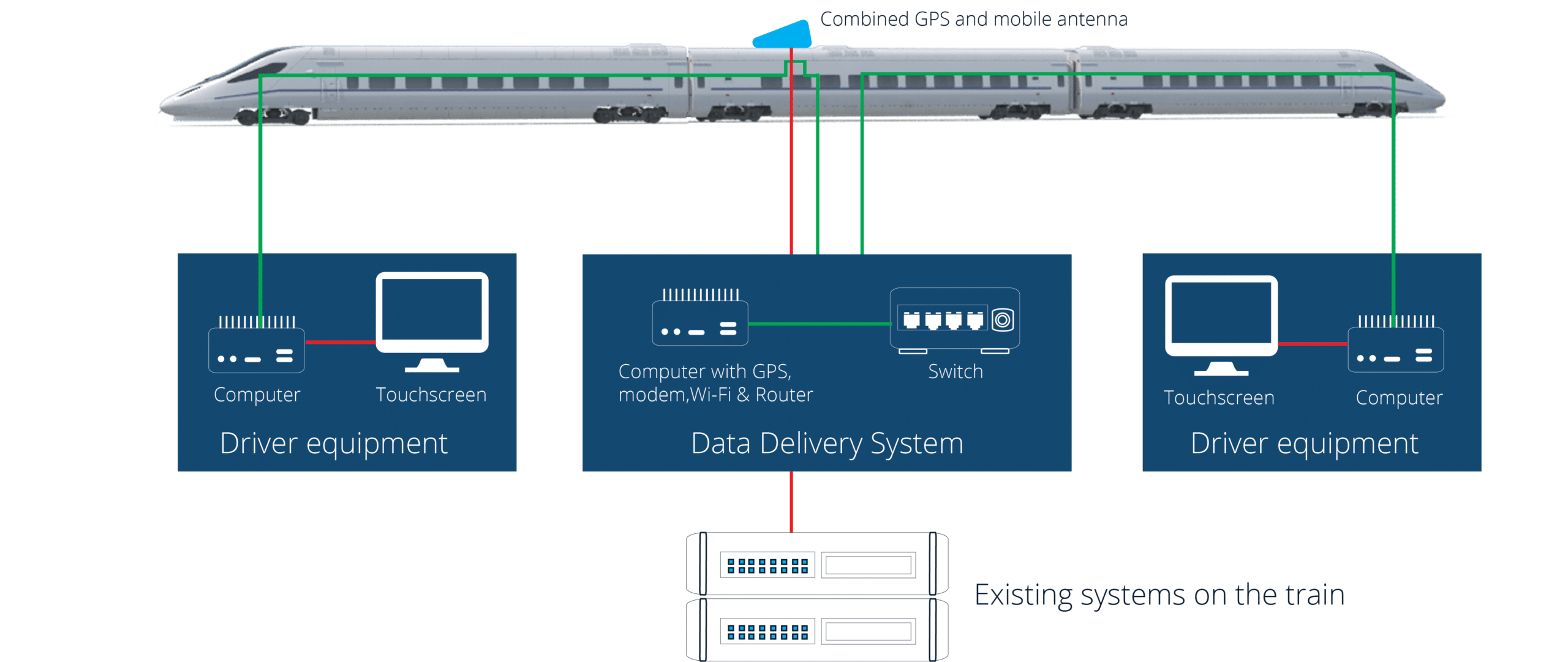



The upgrade to the sustainable Driver Advisory System involves a new Data Delivery System (DLS) and related components to be integrated in existing and new trains. The driver advisory system assists train drivers in arriving on time to lowest possible energy consumption and CO2 emissions.
It is a digital driver guide – or rather a train drivers assistant – which visually informs the train driver about the timetable and the optimal speed to reach the next destination on time. This makes it no longer necessary to pursue a destination full throttle – as the system fine tunes the driving pattern according to the train’s current location and tracks conditions ahead.
The system has proven results in a fleet wide implementation in a mixed environment of passenger and freight by many operators.
As a rule of thumb, one can say that energy consumption rises somewhere between exponential and linear on the changed speed, depending on the acceleration and how fast it goes. Trains are subject to the same requirements as other means of transport. If the speed limits on the main lines can be reduced from 180 km / h to let say 160 km / h, with less breakings and accelerations – provided the driver can comply with the timetable – there are huge energy saving in the lightly reduced speed. The electronic drivers guide provides a tremendously large annual energy saving – in fact a whopping 35 million a year.
– In addition to easing pressure on the drivers, the electronic drivers guide provides a tremendously large annual energy saving – in fact a whopping 35 million a year.
The driver advisory system is developed to first and foremost to reduce energy consumption and CO2 emissions.
However, as drivers were constantly feeling stressed about having to reach destinations at certain times. Having to wait for outside delays, having unexpected stops at stations and platforms or in front of signals, can become disproportionately prolonged. When drivers are informed of the optimal meeting time, they can adjust the speed to it.
The system also has a passenger advantage. If the driver is pre oriented on timetable changes, the passengers are also updated early. This can help eliminate the uncertainty about arrival times, which is a major frustration point for train passengers. Providing passengers with a smoother ride with fewer accelerations and braking, as well as contributing to an improved fuel or energy economy, is a win-win situation.
– In addition to their ambition of complying to timetables, DSB wanted to establish a green profile. DSB also wanted the solution to be financially sound which demanded cost reductions on many fronts. The driver advisory system is just one of the initiatives, but it is an excellent concept.

Train Driver Advisory System: Figure showing the location and basic function of the system modules in the train compartments